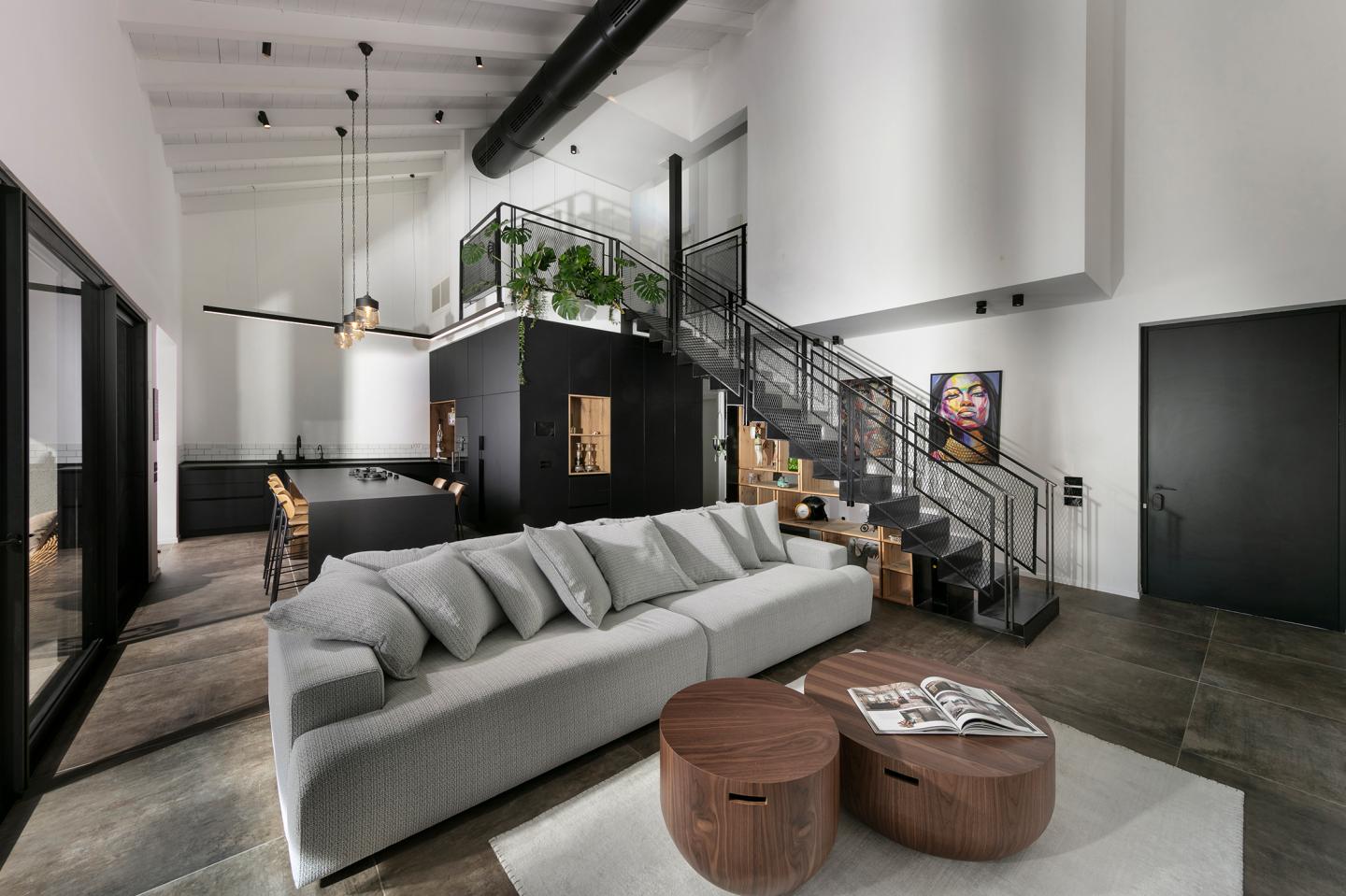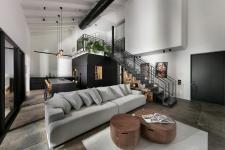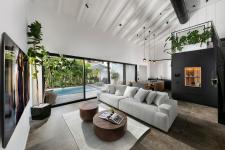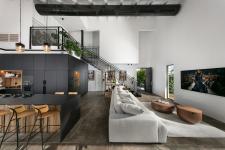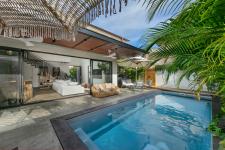Sentimental, classic, and urban — this home weaves together diverse values and design sensibilities, offering each family member a private, intimate space without compromising a shared sense of togetherness.
Built on the site of a long-standing family home rich in memories and emotion, the new house integrates a variety of elements. Architect Ron Shpigel of Shpigel Architects shares insights into the design process and choices that shaped a refined, experience-driven living environment—inside and out.
“The project began as a renovation of the old family home at the center of the lot, which held deep emotional value. The goal was to stay within the original footprint while anchoring the new structure in a lush garden of tropical and local plants—creating a space that feels both experiential and intimate,” explains Shpigel.
“Another request was to locate the master suite and youngest son’s bedroom on the ground floor, taking up a significant portion of that level.”
Some of the original house’s walls were preserved, maintaining its character. The new two-story structure features the kitchen and living room at the rear, opening to the central yard and pool. The master suite and youngest son’s room face the front garden, centered around a mature tree that was carefully preserved. To enhance the public space's scale, a dramatic pitched roof rising up to 6 meters was designed overhead.
The upper level serves as a dedicated space for the two older children, with private suites and a semi-open gallery overlooking the main living area—ensuring a strong spatial connection between the floors.
The home’s rectangular footprint was designed to maximize space within the old house’s boundaries. A reinforced safe room allowed expansion beyond setback lines, shaping an L-shaped plan. Oversized glass doors throughout maintain strong indoor-outdoor flow, while a striking aluminum pergola wraps the kitchen and living area, extending to the front entrance plaza.
The house is composed of two volumes, each with a 40° sloped roof. The front, containing the bedrooms, slopes toward the street, while the rear, housing the open-plan living space, slopes toward the backyard. The entry reveals a lush garden and the preserved tree, with a façade clad in brick and private bedroom windows below a second-story terrace for the older children.
“The bold, recessed front door sits along a side façade clad in porcelain panels rising six meters. Natural materials like bricks, roof tiles, and wood accents are paired with urban-industrial elements—dark aluminum used for the staircase, pergola, and custom furniture,” says Shpigel.
“Upon entry, the public space unfolds, anchored by a floating stand-alone staircase leading to the children’s floor.”
The main living area, under a white-painted wood ceiling with exposed beams, feels bright and airy. A black industrial-style air duct cuts across the ceiling, while the large glass wall—from the kitchen to the far end of the living room—blurs the boundary with the backyard and pool.
The kitchen was designed as a central, social hub, featuring a long island with cooktop and seating on both sides. Alongside it is a full-height cabinetry wall concealing access to the private zone, including bathrooms for the parents and youngest child.
“We treated that volume as a dark graphite cube with recessed oak niches that add warmth,” Shpigel notes.
The staircase not only connects the floors but serves as a subtle divider between the kitchen and lounge, beginning at the entry and rising through the home. A two-sided metal bookshelf with oak elements sits below, adding character to the living room.
Above the kitchen block, a gallery acts as an interior terrace, reinforcing the home's vertical connection. A planter filled with tropical greenery adds a vibrant touch, echoing the lush view through the glass to the backyard, where a compact but functional layout includes a swimming pool, lounge areas, and a full outdoor kitchen.
Finally, in the private areas: "Though the bedrooms aren’t especially large, each has its own large glass door—opening either to the private garden (on the ground floor) or to a second-floor terrace—making them feel like bright, generous suites,” Shpigel concludes.
2023
2025
A two-story home for a family of five in Israel’s Sharon region
Lot Size: Approx. 330 sq m/ 3,552 sq ft
House Size: Approx. 200 sq m/2,153 sq ft
Architectural Design & Interior Design: Architect Ron Shpigel, Shpigel Architects
